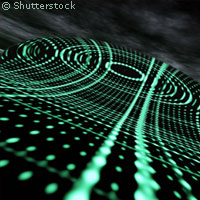Trapped electrons spell longer life
Researchers in France, Germany, Switzerland and the UK have discovered new electron properties that could lead to useful applications in computers and lasers. The study, published in the journal Nature Materials, was funded in part by the IA-SFS ('Integrating activity on synchrotron and free electron laser science') project, which was supported through the 'Research Infrastructures' Thematic area of the Sixth Framework Programme (FP6). Identified as particles at the end of the 19th century by British scientists, electrons perform a key role in phenomena such as electricity. In the current study, the European team of researchers showed that electrons demonstrate interesting characteristics when they are confined to tiny structures spanning a small number of nanometres. More specifically, the team was able to measure for the first time the precise lifespan of an excited electron. This new knowledge could prove useful in the development of semiconductor lasers and applications in quantum information processing, for example. In both areas of science, it would be highly beneficial to be able to extend the period from the point when an electron is at an excited, high-energy state to the point at which the electron eventually drops back down to the ground state. The researchers claim their study paves the way 'for quantum-dot terahertz device development, providing the fundamental knowledge of carrier relaxation times required for optimum device design'. For the past two decades, quantum dots (semiconductors with confined electrons) are being grown by researchers on standard semiconductor substrates, such as the material used to create CD players. Although it has not so far been possible to account for the long electron lifetimes (referred to as the 'phonon bottleneck'), it was rightly predicted that excited electrons would live for a long time in these quantum dots because there were few ways for energy to be lost. In this latest research, the scientists designed quantum dots that would allow their theory to be rigorously tested against a broad parameter range. They specifically separated the energy levels in the quantum dots and made them considerably smaller than the energy of the 'main lattice vibration' (the synchronised movement of a group of atoms in a crystal). The lifetimes were then measured using a free-electron laser (FEL) - a unique short-pulse terahertz laser. As a result, the team was able to observe the longer lifetimes. Although the researchers are quick to point out that their findings differ in terms of starting point to the original phonon bottleneck, they nevertheless believe their results could lead to interesting innovations, specifically terahertz devices based on quantum dots. The free-electron laser, which is housed at the Forschungszentrum Dresden-Rossendorf, is supported by the IA-SFS project.
Countries
Germany



